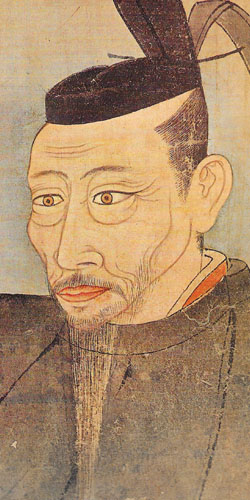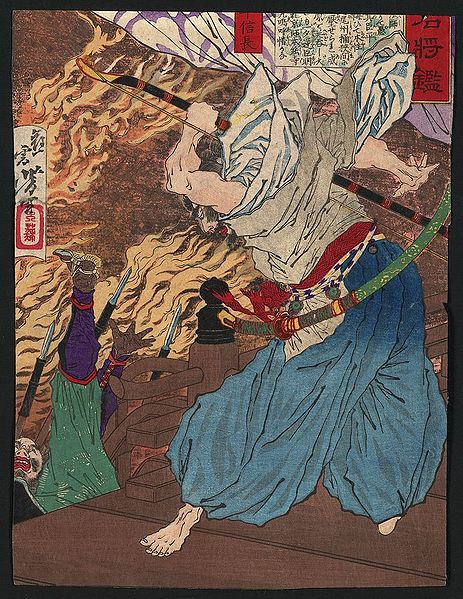
The Tokugawa Bakufu
Japan’s feudal era brought about a great warrior class we know as the samurai. Japan was in so much chaos that strong leaders and strict reforms were needed to bring the whole country together.
 The Tokugawa bakufu (徳川幕府) also known as the Tokugawa shogunate or the Edo bakufu, was preceded by the Sengoku period (warring states.) It was the last feudal Japanese military government that ruled over Japan from 1603 through 1868. It was during this period that Japan adopted a policy, “Sakoku,” that isolated the whole country from the outside world.
The Tokugawa bakufu (徳川幕府) also known as the Tokugawa shogunate or the Edo bakufu, was preceded by the Sengoku period (warring states.) It was the last feudal Japanese military government that ruled over Japan from 1603 through 1868. It was during this period that Japan adopted a policy, “Sakoku,” that isolated the whole country from the outside world.
Oda Nobunaga fighting with another warrior whom he knocks off a building into a raging inferno.
Oda Nobunaga was largely responsible for establishing Japan’s central government during the final phase of the Sengoku period. This led to political unification and the foundation of the Tokugawa shogunate. Oda Nobunaga and his successor Toyotomi Hideyoshi sanctioned strict order over the chaos that still pervaded the country.
Life for many Japanese during the Tokugawa bakufu was based on a strict class hierarchy established by the strong hand of Toyotomi Hideyoshi. The caste system is as follows from the highest ranking:
Daimyo or lord
Warrior-caste of samurai
Farmers, artisans, and traders
 In some parts of Japan, the daimyo and samurai were at the same level if the daimyo was also trained as a samurai. The daimyo would be considered the local ruler. Taxes imposed on the peasant class were a fixed amount over the years and did not take into consideration changes in monetary value such as inflation. This resulted in taxes becoming worth less and less over time. The daimyo class became poorer while the peasant class grew more prosperous. This inflexible nature of imposing taxes led to numerous disputes between noble landowners and peasant classes.
In some parts of Japan, the daimyo and samurai were at the same level if the daimyo was also trained as a samurai. The daimyo would be considered the local ruler. Taxes imposed on the peasant class were a fixed amount over the years and did not take into consideration changes in monetary value such as inflation. This resulted in taxes becoming worth less and less over time. The daimyo class became poorer while the peasant class grew more prosperous. This inflexible nature of imposing taxes led to numerous disputes between noble landowners and peasant classes.
A portrait of Toyotomi Hideyoshi.
The end of the 19th century saw an alliance between several powerful daimyos and the titular Emperor. They succeeded in overthrowing the shogunate after the Boshin War. This brought about the culmination of the Meiji Restoration. The Tokugawa shogunate officially ended in 1868 when Tukugawa Yoshinobu, the 15th Tokugawa Shogun resigned. Despite the flaws of the Tokugawa bakufu as time progressed, Japan still saw the longest period in its history, of peace and stability—well over two hundred years.
